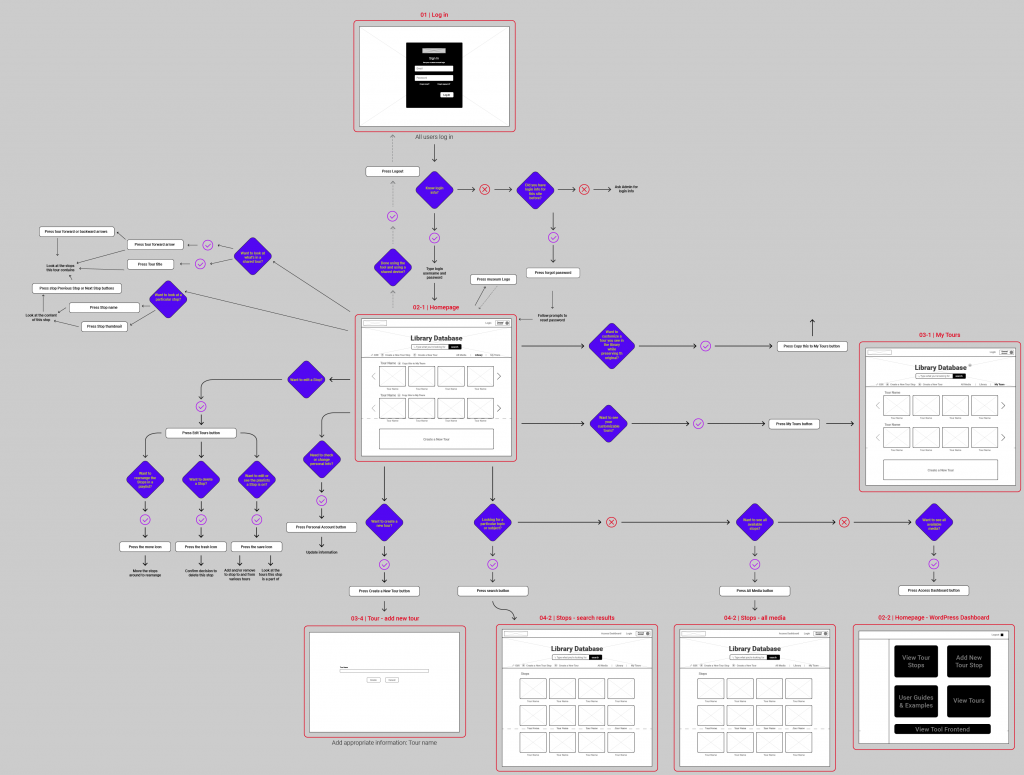Week 6: ETSecrets, Front-end design, and Museum demo prep
Week 6 saw the completion of ETSecrets, the planning of 1:1 playtests with each museum, and also design meetings regarding the design of front-end systems (Library + Search).

Programming: The team experimented with group design meetings. Since different designs merit different technical implementations, using a strictly BVW-style design scheme (i.e. design for the MVP and build that first) might result in work being torn down later to accommodate more complex designs. This can be seen in the possible designs for the “Library page.” Per the summer team’s Figma mockup, the Library page should display ALL tours made for a given museum. The current default homepage currently meets this requirement; however, the current homepage does NOT provide an easy means to finding a specific tour or filtering the tours on the homepage. If a museum has too many tours (either completed or drafts of tours), then a second page or search system might be warranted. Thus the crisis: does the team build the simple implementation for the current simple design? Or does the team pick a more complex implementation to future proof against future desired behaviors? During Week 6, the team negotiated complexity of implementation vs. desired features in meetings. This method was only marginally effective but ultimately resulted in mockups and design plans that programming could move forward with.
Design: Design planned, rehearsed, and executed the location-specific ETSecrets. ETSecrets in essence was a tour of just the 5th floor Bridge at the ETC discussing its history, construction, and “secret” trivia featuring an interview with Steve Audia, who was involved in the Bridge’s maintenance at various points over its 15 year lifespan. Guests had fun learning about the intricacies and “secret” trivia of something that they had walked past every day. While a fun experience, the logistics and manpower requirements were sufficiently complex that Frick organizer Amanda Gillem voiced grave concerns regarding the feasibility of such experiences for her own staff. While the tour was “of professional quality rivaling other virtual tour offerings,” the 5-person team and technical skills were unlikely to be suitable to the current staff of Clayton House tours. Perhaps the biggest takeaway from the playtest was to focus the design of the website around the most common use case: 1 museum staff member with 1 computer. While far from flashy or technically impressive, this use case would likely be the most common for all institutions. Said use case would still have great potential to generate meaningful and entertaining experiences by relying on the host’s skills and knowledge. In the absence of technical savvy, a single host must be able to entertain guests with just the website and their own historical knowledge. Future playtests following halves would likely focus on these users.
In addition to ETSecrets, the team developed playtest materials for 1:1 meetings with each museum over Zoom. These playtests/demos would be a useful check in to communicate progress on what parts of the workflow would live in the WordPress Dashboard vs. the guest-facing front end.
